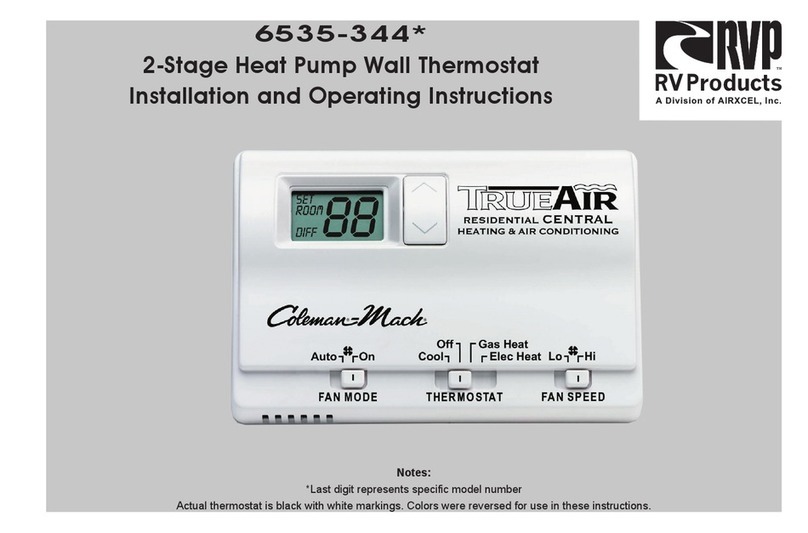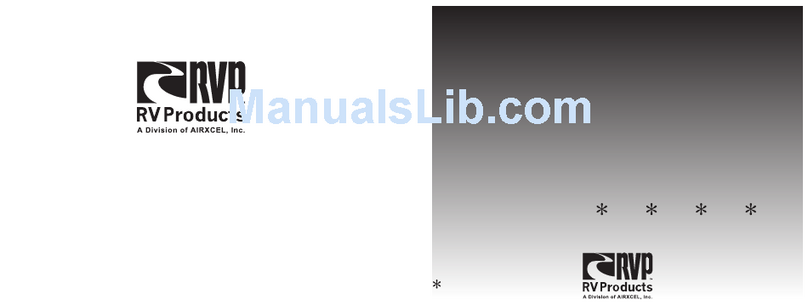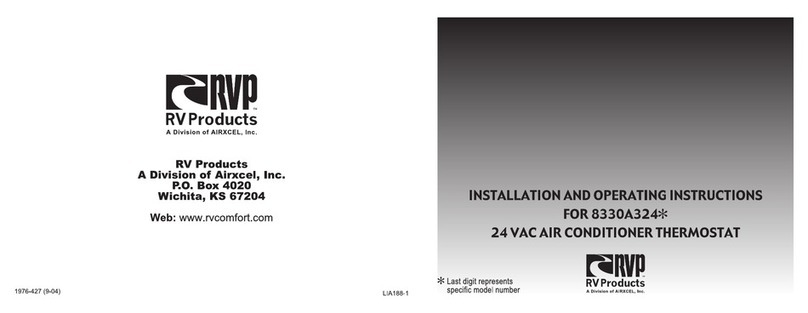
3
I. WALL THERMOSTAT INSTALLATION AND
OPERATING INSTRUCTIONS
APPLICATION
The 6536A335* thermostat is intended for use with an RV
Products 2-stage heat pump.
The thermostat connects to the heat pump with a 9 pin plug
through a lifeline (RVP part number 6795C4351). The OEM
(Original Equipment Manufacturer) must supply the 12 VDC
wiring and the furnace control wiring which connects to the 3
pin plug on the thermostat. The OEM supplies the mating
receptacle for the 3 pin plug. RV Products suggests the
thermostat wiring be minimum 18 gauge. The furnace control
circuit must not exceed 1 amp. The thermostat is equipped
with a replaceable fast-acting 2 amp fuse located on the base
of the thermostat. The fuse is designed to “open” if the
furnace is mis-wired or there is a short in the system. Before
replacing fuse, the cause of the failure must be located and
corrected.
OPERATION
The display indicates room temperature and the word ROOM
is shown on the LCD until the temperature selector is pressed;
at which time the display temporarily indicates the setpoint
temperature and the word SET is shown on the LCD. Each
time the UP arrow is pressed, the setpoint will increase. Each
time the DOWN arrow is pressed, the setpoint will decrease.
Once the temperature selector button is no longer pressed for a
few seconds, the room temperature will again be displayed, and
the word ROOM will be displayed on the LCD.
In electric heat mode, if the heat pump is unable to satisfy the
thermostat, the heat pump goes into lockout. DIFF will display
on the thermostat LCD indicating backup heating is required to
satisfy the thermostat.
In gas heat mode, the gas furnace will provide the only source
of heat and the heat pump is locked out.
NOTE
The temperature displays in degrees Fahrenheit as a factory set
default (See Figure 2). To display in degrees Celsius, move the
jumper marked “F” and “C” to bridge between middle pin and
position “C”, then cycle 12 volt power off and then back on.































